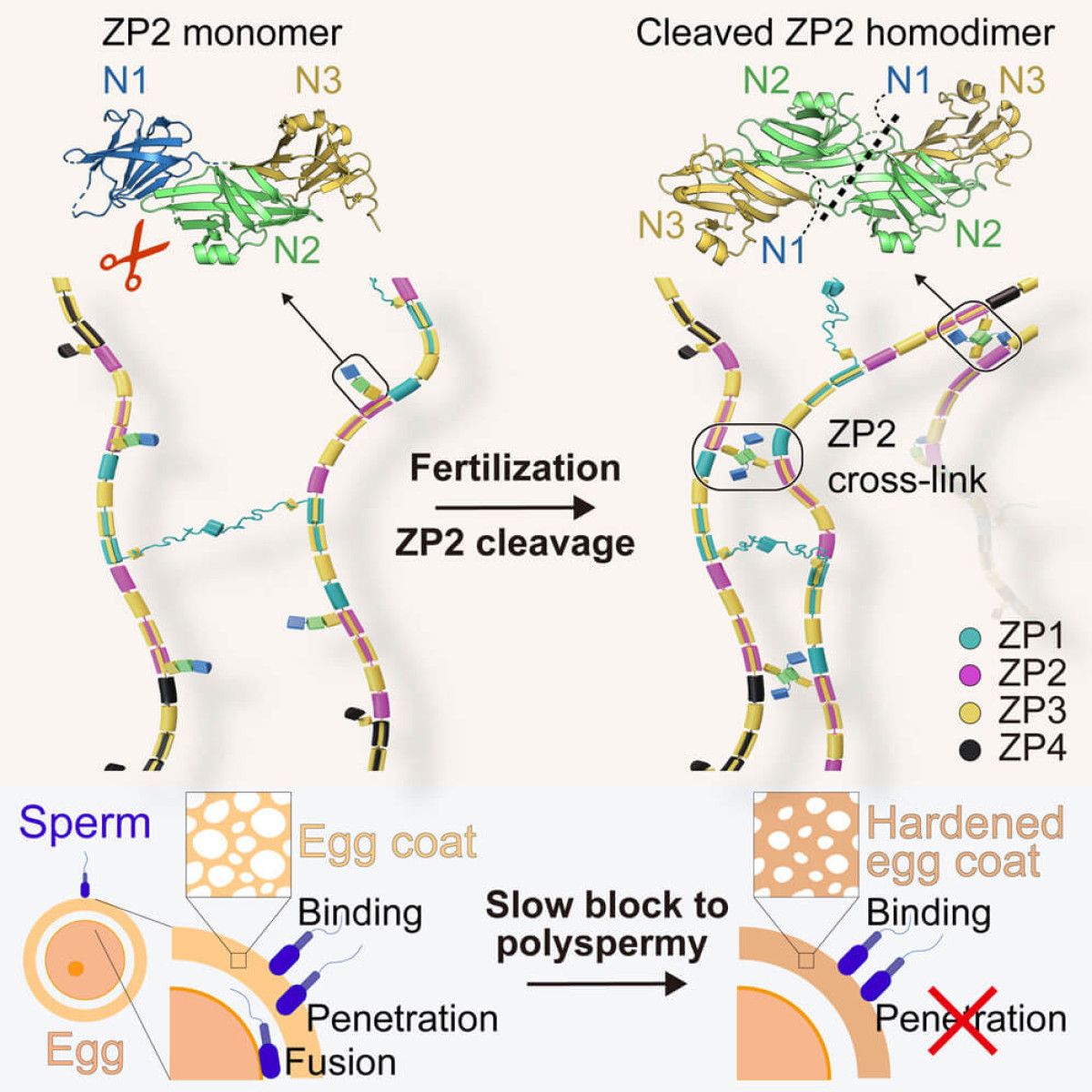Unveiling the Mysteries of Egg Fertilization: The Role of ZP2 Cleavage and Egg Coat HardeningIVF.net Newsdesk02 April 2024 |

Fertilization, the pivotal moment when a single sperm merges with an egg to form a new life, is a marvel of biological precision. Beyond the romance of conception lies a complex ballet of molecular interactions, finely tuned to ensure that only one sperm can succeed. Central to this process is the zona pellucida (ZP), the protective egg coat that undergoes remarkable changes immediately after fertilization to prevent any other sperm from entering the egg. Recent groundbreaking research has shed light on the molecular intricacies of this process, particularly focusing on the role of the ZP2 glycoprotein, a key player in the hardening of the egg coat that blocks polyspermy – the penetration of an egg by more than one sperm.
The ZP, a glycoprotein envelope surrounding the egg, is the first line of interaction between the egg and the sperm. It plays a critical role in species-specific sperm recognition and acts as a gatekeeper, ensuring that only one sperm can fertilize the egg. Following the initial fertilization event, the ZP undergoes a transformation, hardening to prevent any subsequent sperm from penetrating the egg. The mechanism behind this transformation has long been a subject of fascination and study within the scientific community.
Recent studies have uncovered a critical piece of this puzzle: the cleavage of ZP2, a major component of the ZP structure. Before fertilization, ZP2 is primed to interact with sperm. However, once fertilization occurs, ZP2 is cleaved, undergoing a significant transformation that leads to the hardening of the ZP.
The journey from ZP2 cleavage to egg coat hardening is a complex one, involving the oligomerization of the cleaved ZP2. Oligomerization is a process by which proteins bind together, forming a structure that is significantly different from that of the individual proteins. In the case of ZP2, cleavage triggers this oligomerization, leading to extensive cross-linking between ZP filaments, the structural components of the ZP. This cross-linking effectively reinforces the ZP, making it impenetrable to additional sperm.
This revelation came from both biochemical and structural studies, including the analysis of vertebrate egg coat filaments and computational models of human ZP. These studies have provided unprecedented insights into the molecular architecture of the egg coat and the dramatic alterations it undergoes following fertilization.
The findings from these studies are not just academically intriguing; they have practical implications for understanding human fertility and developing treatments for fertility issues. By illuminating the molecular basis of ZP hardening, this research opens the door to potential interventions for conditions related to polyspermy, which can lead to fertilization failures and early embryonic loss.
Moreover, the detailed understanding of ZP2's role in fertilization could lead to novel contraceptive methods that mimic the natural blocking mechanisms of the egg coat. On the flip side, for couples facing infertility challenges, tweaking the process of ZP2 cleavage and oligomerization could enhance the chances of successful fertilization during assisted reproductive techniques.
The dance of fertilization, with its tightly regulated steps and precise molecular cues, is a testament to the complexity of life's beginnings. The recent advances in our understanding of ZP2 cleavage and egg coat hardening add a fascinating chapter to the story of human reproduction. As we continue to unravel the mysteries of fertilization, we not only deepen our appreciation for the wonders of biology but also arm ourselves with the knowledge to tackle some of the most pressing challenges in reproductive health.
The journey from a single sperm's successful penetration of the egg to the hardening of the egg coat is a marvel of biological engineering, ensuring the uniqueness of each fertilization event. In the grand scheme of life, it's a reminder of the delicate balance and intricate processes that underpin our very existence.
Source
Cell - ZP2 cleavage blocks polyspermy by modulating the architecture of the egg coat
https://www.cell.com/cell/fulltext/S0092-8674(24)00179-X


213